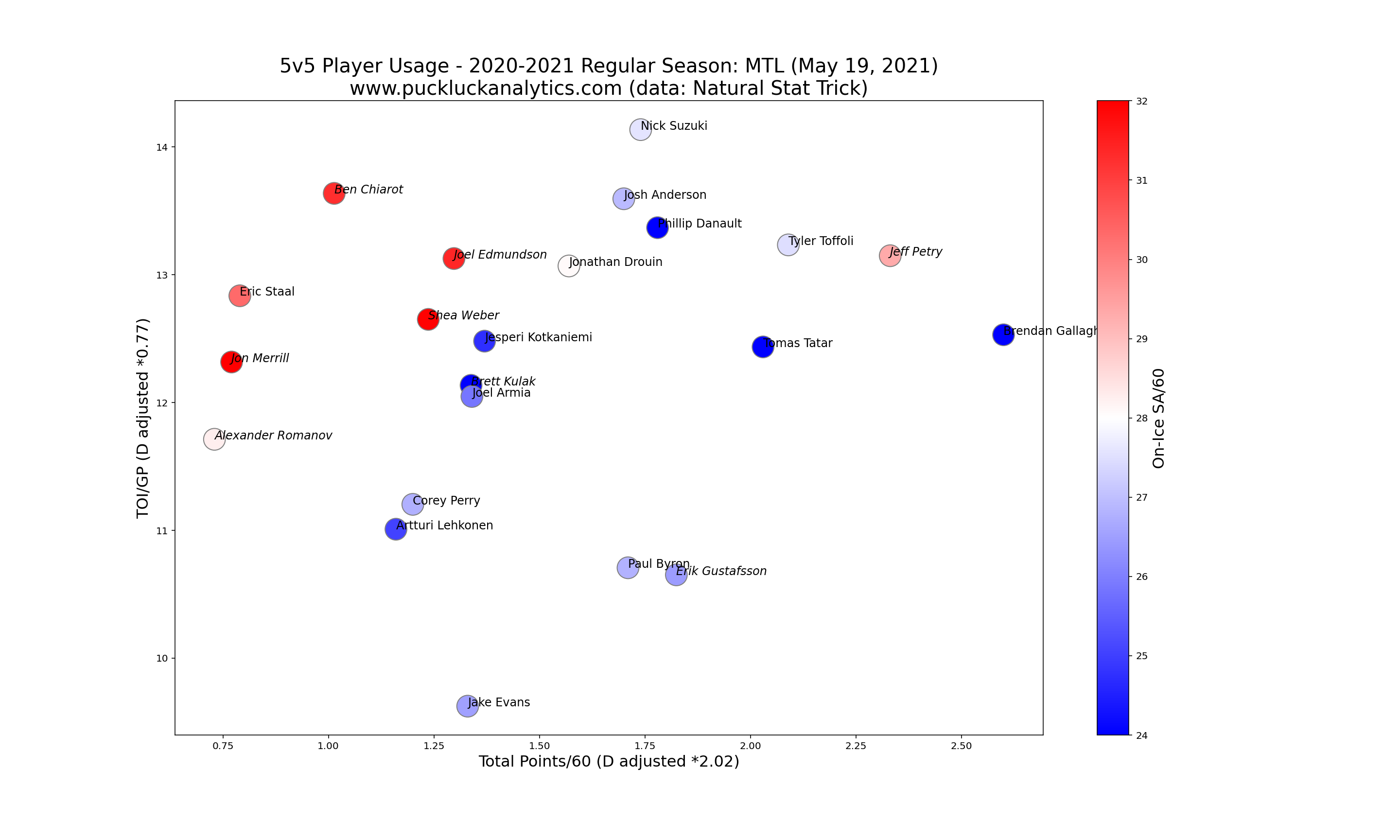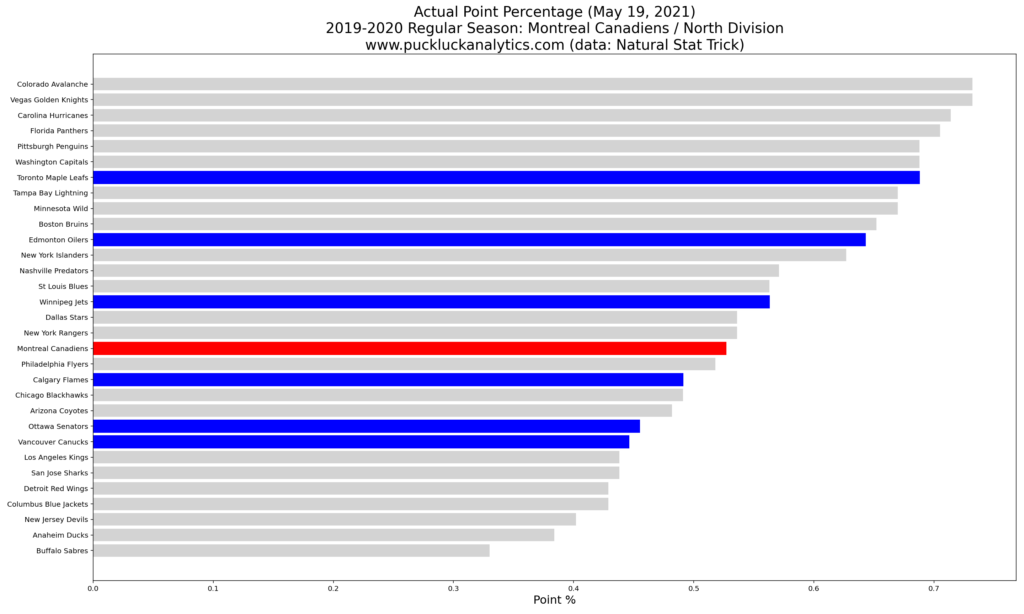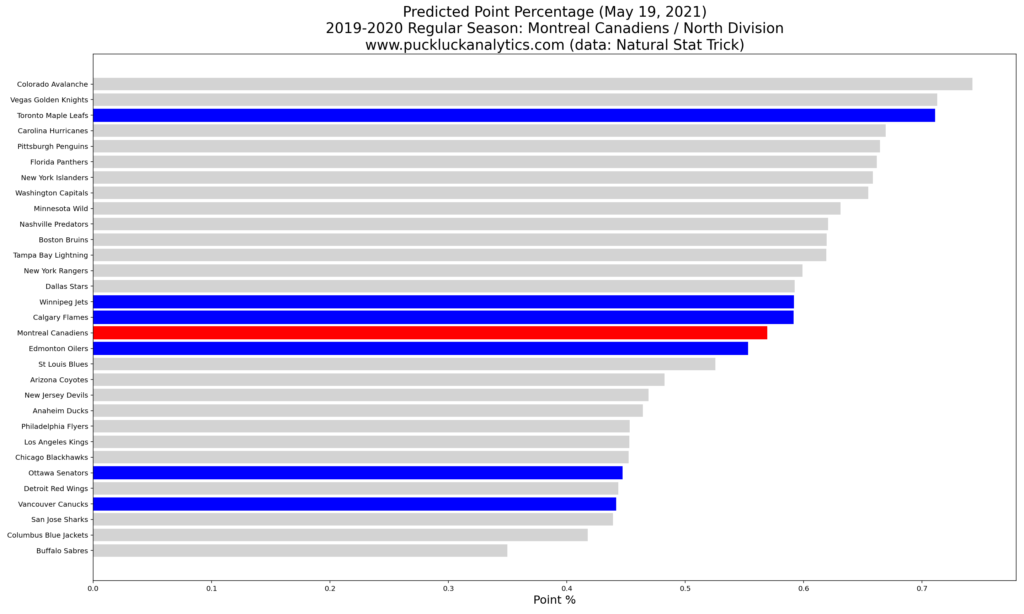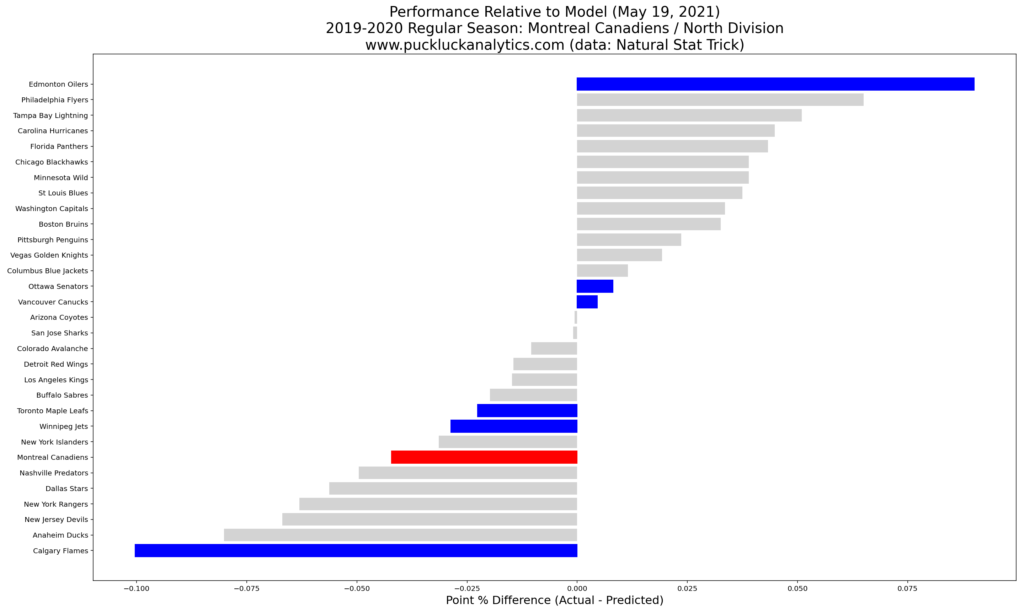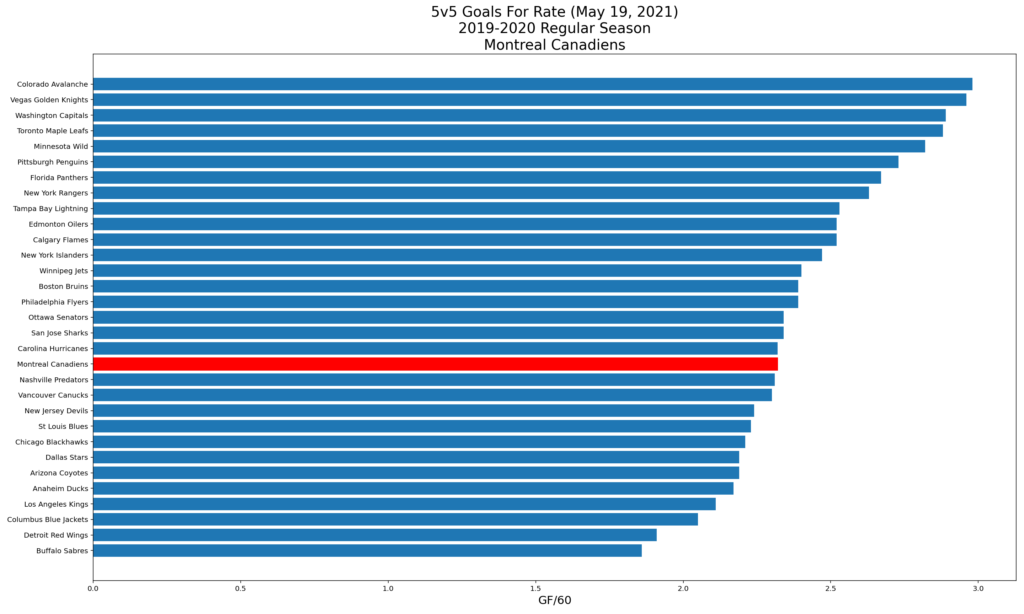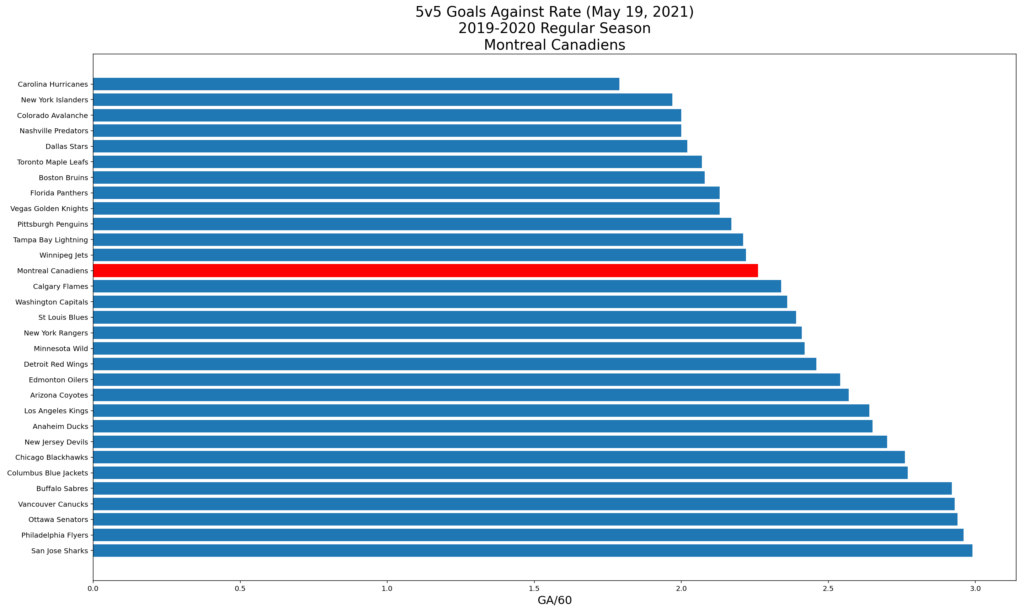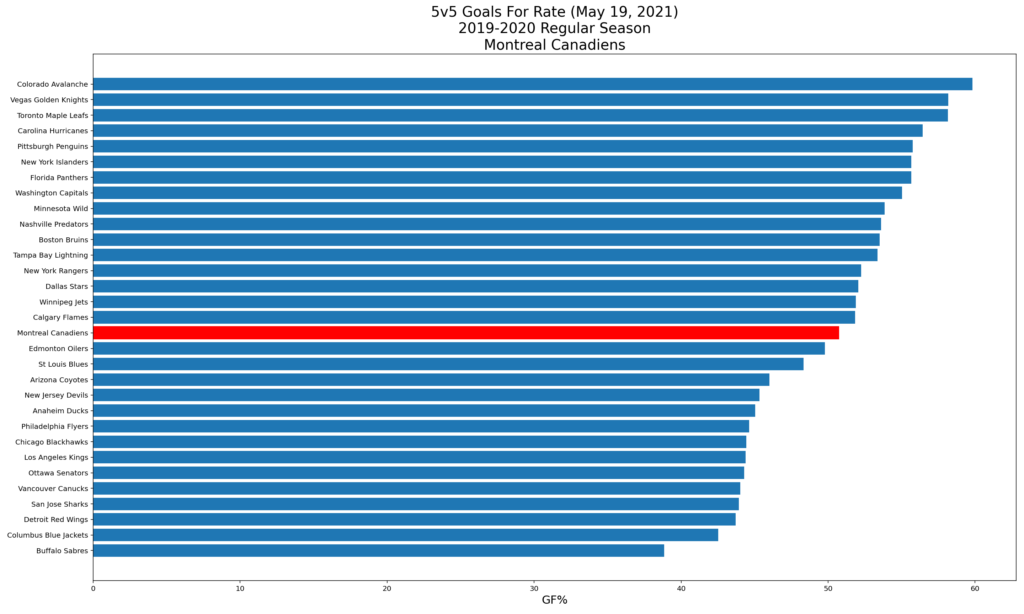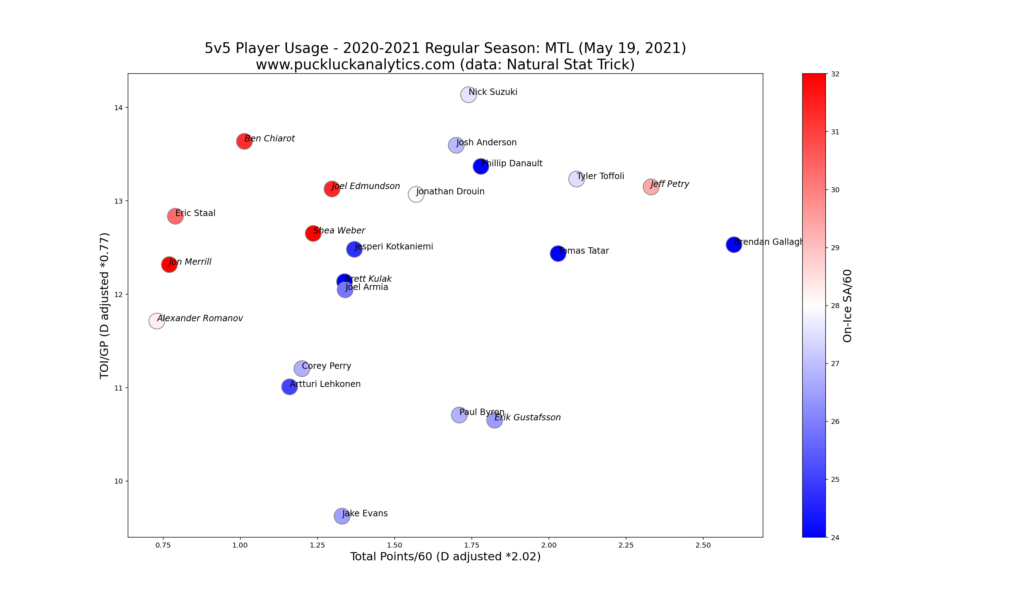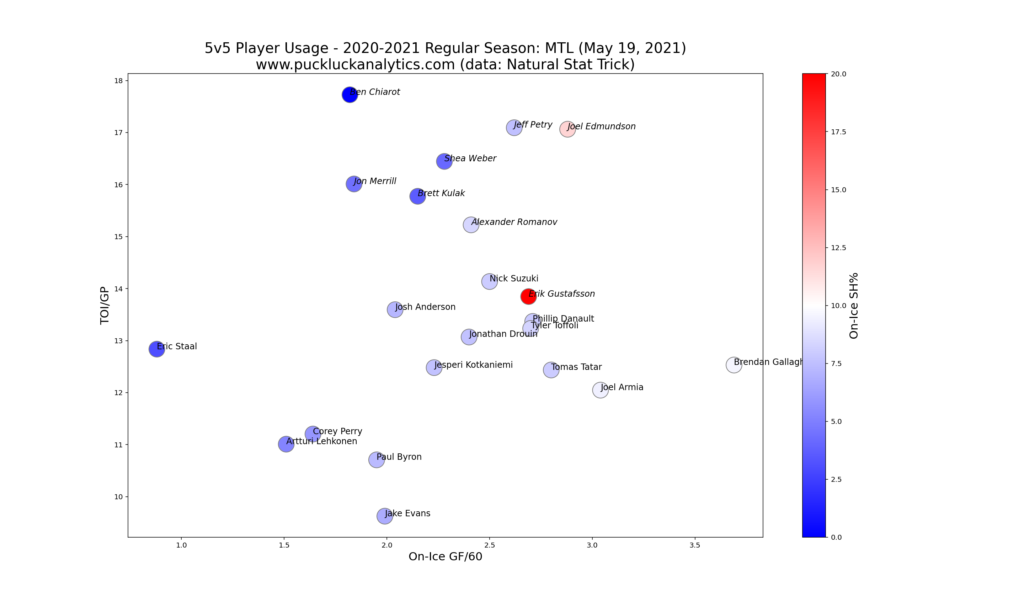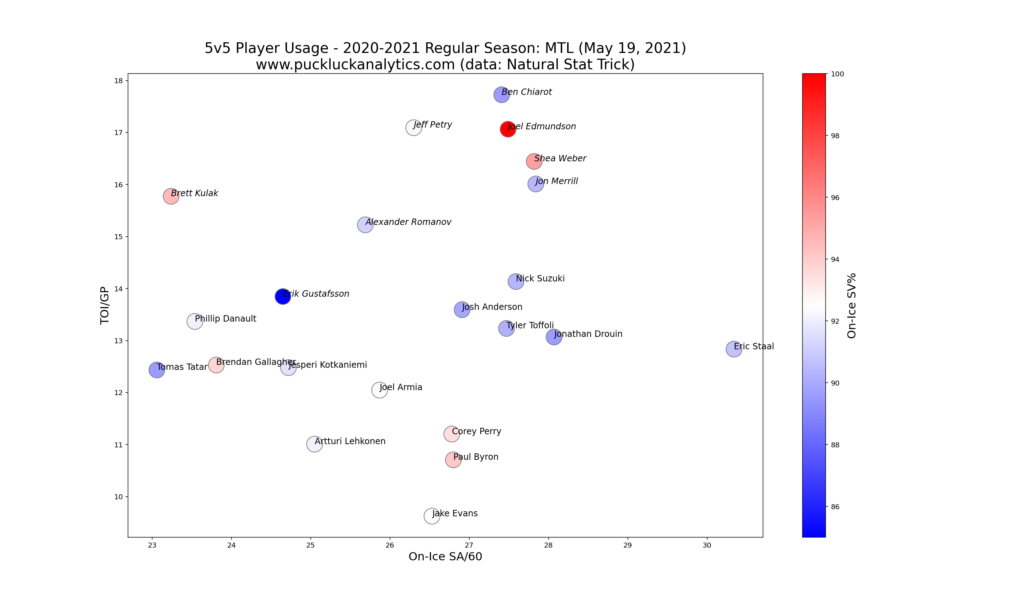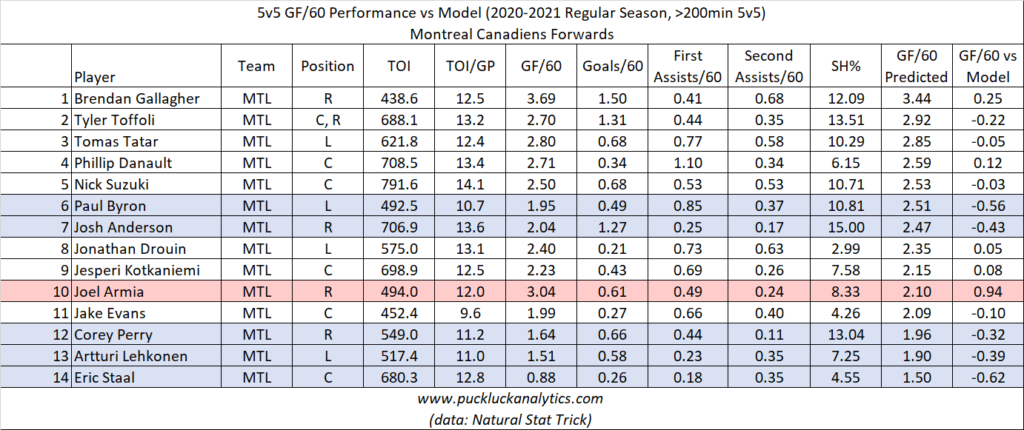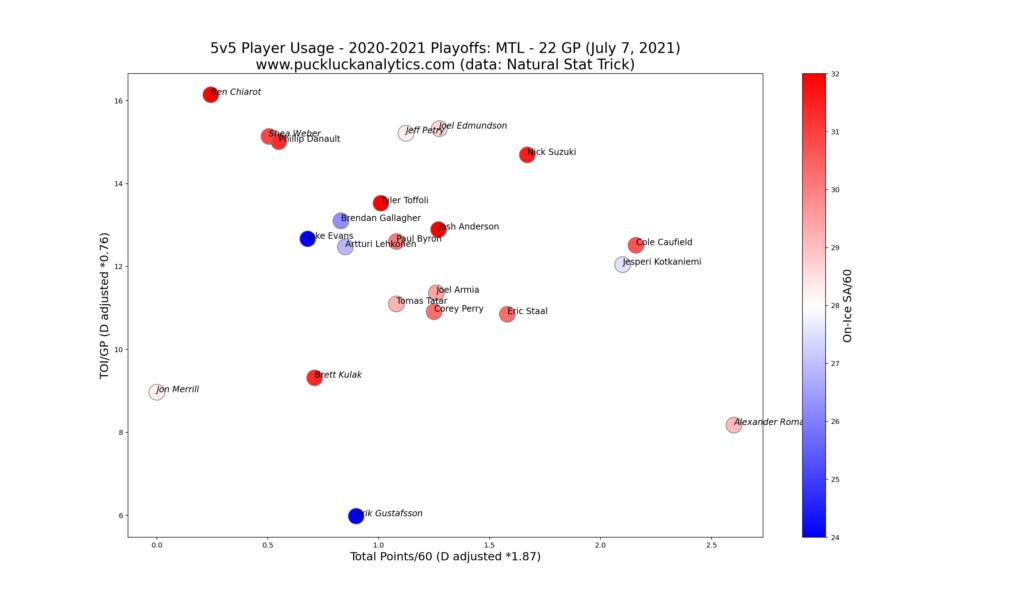The Montreal Canadiens season was a rollercoaster from start to finish. After a red hot start, the Habs faltered early in the season leading to the dismissal of head coach Claude Julien. While they regained form to claim a playoff spot, they faltered again down the stretch due to injuries to a number of key players. After going down 3-1 in the first round to the archrival Maple Leafs, the Habs engineered a comeback and went on a magical run to the Stanley Cup Final where they fell short against the powerhouse Lightning. Let’s take a look at the Canadiens season. If you haven’t already, check out this post for more detail on the plots we’ll look at.
Overall Performance (Regular Season)
The Canadiens had a bumpy ride through the regular season, ultimately coming away with the fourth seed in the North Division. Let’s take a look at their performance relative to our points predictor model, which uses only 5v5 data as input.
While the Habs finished fourth in the North and our model puts them in fourth as well, the model shows a different picture than the standings. Based on their 5v5 goal rates, the Habs were very closely matched with three other teams in the division, with a tight battle expected from second to fifth in the division. The Canadiens also underperformed the model suggesting that their underlying 5v5 play was stronger than their regular season record indicates.
Let’s take a look at the 5v5 goal rates that feed into the model.
While neither offense or defense stands out in the Canadiens’ goal rates, their defense appears to have been the slightly stronger area. In the end, they sit in the middle of the pack for both goals for and goals against.
Player Performance (Regular Season)
We’ll start digging into player performance with a 5v5 player usage chart. Stats for defensemen have been factored for direct comparison with forwards and the result is a visual depth chart along the diagonal.
We don’t really see the diagonal distribution we were looking for on this chart, suggesting that the Habs may not have deployed their skaters as effectively as possible. It does look like the Canadiens preferred to roll four lines with ice time relatively evenly distributed despite significant differences in individual point production.
By plotting 5v5 on-ice GF/60 vs TOI/GP we get a visual depiction of relative offensive contributions. Players located further to the top right on this plot contributed more to team GF/60 due to higher scoring rates and more ice time.
It’s clear from this plot that Montreal’s offense scored by committee this season, particularly from the forwards. There is a large group of forwards including Tyler Toffoli, Philip Danault, Nick Suzuki and others clustered together. Brendan Gallagher is the only forward who stands out with much stronger offensive impact.
We get a similar visual for defensive contributions by plotting 5v5 on-ice SA/60 vs TOI/GP. This time, players further down and left had stronger positive contributions to team GA/60.
With the league average SA/60 for players with over 200 minutes played at 5v5 at 30, it’s clear the Canadiens performed well suppressing shots this season. There really isn’t much to differentiate their defensemen, indicating they were equally capable defensively with different pairings on the ice. The Habs’ forwards were generally strong defensively as well, with Danault, Gallagher and Tomas Tatar leading the way. Their strong defensive play at 5v5 may have been foreshadowing for their unlikely run to the Stanley Cup finals.
Let’s take a look at which players carried their linemates using our on-ice GF/60 models. We’ll do this by focusing on the variance between the actual GF/60 and the model predictions. Variances over about 0.3 are of interest and negative variances suggest a player carried their line mates.
Starting with the forwards, most of Montreal’s top forwards appear to have carried their weight offensively. Paul Byron and Josh Anderson are the most notable forwards who appear to have carried their linemates, although Anderson also had a high shooting percentage that may be exaggerating his impact by inflating the model output. Joel Armia is the only forward who looks like he was carried by his line mates.
Among defensemen, there aren’t many large variances from the model. Joel Edmundson appears to have been carried offensively by his linemates, as does Alexander Romanov.
The Habs received solid goaltending from Carey Price this season, however injuries limited him to just 25 games. Jake Allen proved to be a capable, although not outstanding, backup.
Playoff Performance
The Canadiens came back from a 3-1 series deficit to the Maple Leafs in round 1, which sent them on an unlikely run all the way to the Stanley Cup finals. While their 22 playoff games is still too small a sample to project future performance, we can gain some insight on their playoff success.
The Canadiens’ 5v5 usage chart shows a similar story to their regular season, with scoring by committee and relatively evenly ice time distribution. The Habs had contributions throughout the lineup. With Carey Price healthy, strong goaltending backstopped the Habs’ strong team defense to frustrate opposition offenses.
Looking Ahead
With nearly $69M committed to the 2021-2022 salary cap as they head to the offseason, the Canadiens roster will likely see some turnover this offseason as they manage a number of pending free agents.
Key RFAs:
Arttruri Lehkonen and Jesperi Kotkaniemi are both pending RFAs. Kotkaniemi was an important piece of the Habs playoff run and is just 21 years old. The Habs will look to him to continue to play a larger role as he develops.
Key UFAs:
The Habs have a number of pending UFAs on their roster, including Philip Danault, Tomas Tatar and Corey Perry. Danault’s defensive prowess was a key to the Canadiens’ success in the playoffs and it seems likely that the Habs will make an attempt to bring him back next season. We saw Perry was a player who carried his line mates offensively and fit well in a depth role. Tomas Tatar also had strong numbers but may be the odd one out if cap space becomes a limiting factor.
Key Players Under Contract:
Nick Suzuki and Cole Caufield became household names during the Canadiens playoff runs. At 21 years old, Suzuki looks poised to become a key pivot for the Habs for years to come. Caufield impressed with his scoring ability in his first playoffs and is still qualifies as a rookie for the 2021-2022 season.
Tough Questions:
How much change is needed for the Canadiens to be a contender again next season? Underdogs in the playoffs from start to finish, many expect the Canadiens to fade in 2021-2022. Yet their 5v5 results suggest they may be better than that and they have a number of young players whose growth could help the team improve internally. If Carey Price can stay healthy and the Habs get strong goaltending to back up their defensive play, they may be set to contend without a lot of turnover to their roster.
Offseason Priority:
The Canadiens priority should be resigning their key RFAs and signing Danault to a new deal. If Danault leaves for greener pastures, the Canadiens will need to look for another shutdown center that can fill the void.
Check out my other season reviews that are already up, such as the Vegas Golden Knights and the Toronto Maple Leafs, and subscribe to ensure you don’t miss the final season review for the Tampa Bay Lightning when it comes out.
data: Natural Stat Trick
cap data: CapFriendly
